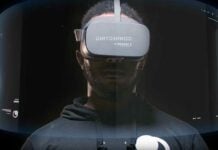Christian Stammel, CEO Navispace AG and founder of Wearable Technologies, on the sixth dimension of Wearable Technologies:
Because WT so closely relates to the functions of human beings, WT products should cater to all five human senses – hearing, sight, touch, taste and smell.
Dimension one (hearing) covers such products as hearing aids and Bluetooth headsets. Dimension two (sight) includes everything from 3-D glasses and head-up displays to medical implants that support the optic nerves. The WT products of dimension three (touch) often mimic a sort of “second skin”. Microsensors and highly sensitive touchpads are but two of the offerings here. As yet, dimension four (taste) cannot be supported or replaced by any kind of wearable technology product. Gas sensors that can warn the wearer before he/she can smell the gas represent an innovation in dimension five (smell).
The fascinating sixth dimension comes in the form of some very sophisticated technologies that “read our minds” for the purposes of rehabilitation, training or gaming. Devices of today’s modern technology “read our minds” in a variety of ways.
The company OCZ Technology uses one of the easiest methods for its PC Game Controller nia™. The device is able to translate facial expressions, eye movements and concentrated brainwave activity into PC game keyboard and mouse controls.
Another example for a similar market-ready product is NeuroSky. Its ThinkGear™ technology digitizes analog electrical brainwaves to power different user-interfaces. According to NeuroSky a monumental hurdle lies in distinguishing brain signal from the noise that comes from ambient electricity, muscle movement, etc.. Raw brain signals are amplified and processed —delivering concise input to the device. Algorithms come from both NeuroSky as well as research institutions and universities currently include “attention”, “meditation,” and physical eyeblinks. NeuroSky technology accurately measures brainwaves today, but is busy in labs throughout the world advancing development in new areas of emotional EEG, Electromyogram (EMG), Electro-Oculogram (EOG) and Electrocardiogram (ECG). The game company Mattel, utilizes NeuroSky’s ThinkGear™ technology in its MINDFLEX® Game.
The company Emotiv has developed a personal interface for human computer interaction called EPOC. It’s a high resolution, neuro-signal acquisition and processing wireless neuroheadset. Similar to NeuroSky it uses a set of sensors (wet electrodes) to tune into electric signals produced by the brain to detect wearer thoughts, feelings and facial expressions and connects wirelessly to most PCs.
4DForce GmbH has come up with a truly unique method of measure. The company’s device uses dry electrodes to read and process EEG signals in the brain and interpret the wearer’s intentions. The technique can be used for rehabilitation, training or gaming purposes. One of the innovation’s many uses can help children with concentration disorders. The “mindreading” device allows kids to move their desk top cursors with but a thought, for instance. And what about the “grown-ups”? Industry insiders say they are somewhat slower in embracing the new technology: Apparently adults have a harder time believing they can move something with their minds.
A more comprehensive summary of these technologies can be found in our soon-to-be released market study on the Wearable Technologies market.














